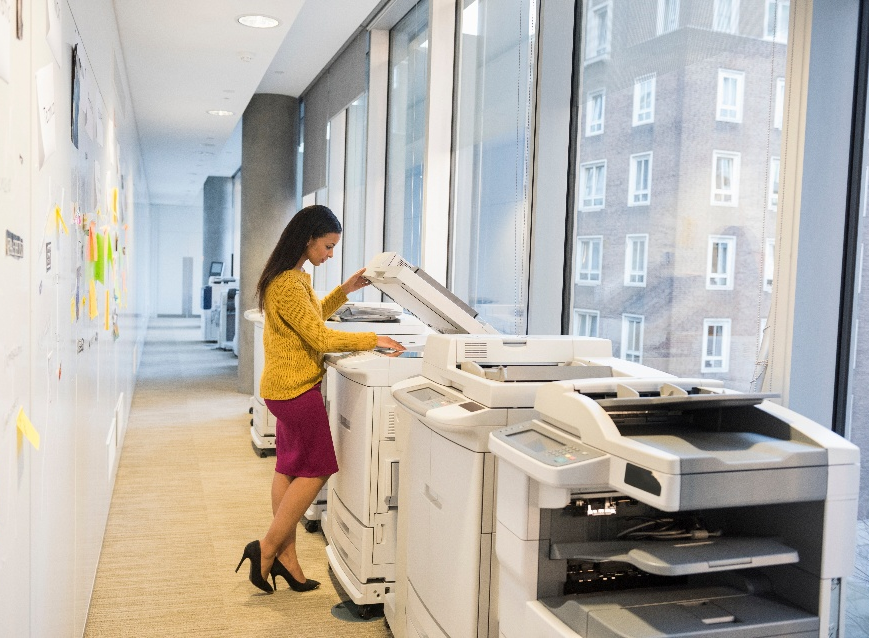In a post-COVID-19 business world, what should your business do with office printers? For some organizations, printers gather dust as more workers carry on from home. For others, the printer is more essential than ever, digitizing paper, supporting new workflows and working harder than ever.
Despite an overall decline in use, the office printer is not going away. For industries such as healthcare, logistics and financial services, paper records and physical documentation is more important than ever. And thanks to new cloud integration, multifunction devices can be an indispensable part of your digital workflows. Whether it's company culture or legal requirements, paper still rules many processes.
Now is the time to assess your printer fleet and downsize, right-size or redeploy your valuable print assets. Here’s what to consider:
1. Evaluate Your Needs
A printer fleet assessment should look at the cost of ownership and identify where your printers are an IT resource drain and whether the cost to support printers is excessive.
The first step in the process is to collect and analyze your printing needs for each department. This process will enable you to understand your printing demands for each department and each employee and will give you actionable data that you can use to cut costs.
Many businesses are unaware of the actual cost of printing. With multiple printers, scanners, copiers, and fax machines churning out paper in various departments or office locations, it becomes challenging to get an accurate picture of total costs. Studies by Gartner reveal that companies spend an average of 1-3% of total revenue on document creation. Worse, most are unaware of:
- What equipment they own and use company-wide
- Their total cost of supplies and other expenses after the initial purchase
- Who is using the equipment, and how it is being used?
2021 presents an ideal opportunity for upgrading printer fleets with cost-saving, efficient equipment that addresses multiple business issues.
2. Downsize (or Upgrade) Your Technology
As you consider how to deploy your printers more effectively, remember that today’s multifunction printers (MFPs) can take the place of many outdated printers, copiers, scanners and fax machines. Not only are newer devices more efficient in their consumption of power, but they also offer many other advantages.
If your workforce is increasingly working remotely, they need to create, collaborate, and share documents online. Fortunately, new printers can seamlessly connect and integrate with Cloud services. Canon’s new office machines make it possible to print from cloud services with functions like Print from Cloud as well as scan into cloud services like Box and Google Drive. The Central Department Management and Reporting tool helps keep track of work product no matter where it is stored. In fact, Canon’s entire managed print software solution, uniFLOW Online, is Cloud-based, meaning you no longer need to purchase and manage server hardware to have advanced print services across your printer fleet.
Transitioning from desktop printers and fax machines to internet-enabled document management powered by multifunction printers introduces many advantages:
- Makes collaboration between employees and customers possible
- Eliminates unnecessary paperwork, replacing paper with electronic versions
- Supports integrated workflow to distribute and manage documents
3. Secure Your Paper and Digital Workflows
Printed documents are easily picked up or copied before the employee generating confidential information arrives at the printer. With new MFP devices, printers and sophisticated software work together to provide secure printing and electronic distribution of documents. Printing of secure information can be delayed until the authorized employee arrives at the printer and enters the proper authorization code or scans their security card.
Security is an integrated function of modern printers, regardless of where the printers are located. Centralized control can administer printers and their use in every location of the business. Print and distribute documents securely throughout the network – and across the internet.
In addition, there are additional advantages from upgrading the printer fleet in 2021:
- Supplies for older printers from multiple manufacturers and models are replaced with common consumables that are easily monitored
- Service is reduced through consolidating to fewer more efficient MFPs
- Power consumption is reduced using energy-efficient technology
- Space previously taken by multiple units may be used more productively
- Toner, cartridges, maintenance kits, and other supplies are expensive. Taking control of these expenses is an essential benefit of upgrading the printer fleet.
As you reconsider how to support your workforce, now is the ideal time to right-size your printer fleet. Considering the total cost of your printing, from paper to toner and repairs you can understand the true cost of your current printing situation. This data will give you the opportunity to make adjustments that will drive efficiencies and cost savings to your bottom line and lead to increased productivity. If you would like to get a printer fleet assessment and figure out how to more cost-effectively deploy your printer fleet, talk to the print experts at the Gordon Flesch Company.










